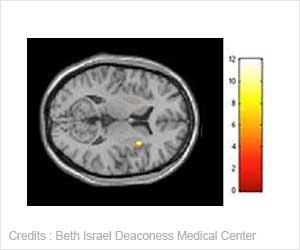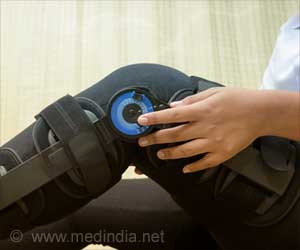Cancer vaccines that attempt to stimulate an immune system assault fail because the killer T cells aimed at tumors instead find the vaccination site a more inviting target.
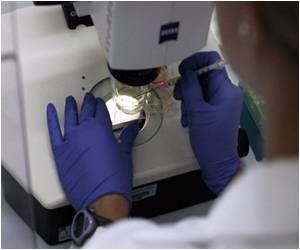
A common substance used in many cancer vaccines to boost immune attack betrays the cause by facilitating a buildup of T cells at the vaccination site, which then summon more T cells to help with the perceived threat.
"Vaccines stimulate production of T cells primed to attack the target cancer, and there are many T cells in the bloodstream after vaccination. We found that only a few get to the tumor while many more are stuck at or double back to the vaccination site," said senior author Willem Overwijk, Ph.D., in MD Anderson's Department of Melanoma Medical Oncology.
The result: largely unscathed tumors while an overstimulated immune response can cause lesions at the injection site. The team found that a major culprit in this failure is incomplete Freund's adjuvant (IFA), a mineral oil-based adjuvant included in many vaccines to stoke the immune response.
"IFA sticks around the vaccination site for up to three months, along with the antigen designed to trigger immunity against the tumor," Overwijk said. "T cells keep attacking and secreting chemokines to call for reinforcements. But it's an unkillable target; T cells can't kill mineral oil."
Eventually, the T cells die. "The vaccination site increasingly resembles a viral infection, with lots of damaged tissue and antigens," Overwijk said.
"Switching to a saline-based adjuvant in a melanoma vaccine reversed the T cell effect in mice," Overwijk said, "Major accumulations of T cells gathered in tumors, shrinking them, with minimal T cell activity at the vaccination site."
A clinical trial of the concept is expected to open later this year led by Craig Singluff Jr., M.D., professor of surgery at the University of Virginia Medical School, and Patrick Hwu, M.D., chair of MD Anderson's Department of Melanoma Medical Oncology.
Overwijk and colleagues noted 98 federally approved U.S. clinical trials of vaccines against a variety of cancers have almost all failed, while another 37 trials are open, enrolling patients. The U.S. Food and Drug Administration has approved only one therapeutic vaccine, for treatment of prostate cancer, out of all of those trials.
"Our group and many other researchers have been trying for years to improve the performance of cancer vaccines, to no avail," Overwijk said. "People kept trying because of these beguiling T cell levels in the blood. But our data suggest that the very nature of IFA-based vaccines may make it almost impossible for them to work well."
In past experiments and clinical trials, tumors were rarely examined for evidence of T cell penetration. In people, they are often inoperable, and there was no indication that it needed to be done. "But a few researchers did analyze human tumors for T cell infiltration and largely found what we found in our mouse experiments," he said.
Mouse studies reveal vaccine self-sabotage
The team studied the fate of melanoma-specific CD8-positive T cells after vaccination with the gp100 peptide with and without IFA.
Both vaccines increased levels of the desired T cells in the blood, but with IFA, the T cells dropped to nearly undetectable levels after three weeks and did not rebound even with an engineered virus-based booster. The vaccine-lacking IFA produced similar peak amounts of the T cells, a response that persisted over time.
The research team fluorescently tagged T cells in the mouse model to see where they went.
* Mice without IFA had the bulk of T cells light up in their tumors with minimal presence at the vaccination site.
* T cells built up at the injection site in mice that received IFA-based vaccine, with a tiny showing in the tumor.
Response duration was tested in gp100/IFA and control IFA vaccines. The antigen/IFA combination gathered and persisted at the vaccination site, where it could still stimulate the proliferation of injected T cells 96 days after vaccination.
A separate set of experiments showed the antigen/IFA-driven T cells were forced to kill themselves at the vaccination site by a variety of cell suicide-inducing proteins.
Reducing vaccine depots at injection site
Overwijk and colleagues inferred that a possible answer to the problem was to reduce the size and persistence of vaccine "depots" at the injection site.
They tested a vaccine based on a saline solution instead of IFA and found that antigens cleared more quickly but did not spark the desired T cell response. A combination of three stimulatory molecules (covax) was added to the saline/peptide vaccine, producing a strong T cell response. IFA/peptide vaccine produced a strong T cell response but also stronger post-peak T cell suicide.
A comparison of saline/peptide/covax vs. IFA/peptide/covax showed the saline version caused T cells to home to the tumor and destroy them, while the IFA version focused T cells at the vaccination site, killing normal tissue and inducing chemokines that damaged and killed T cells.
"IFA-based vaccination sites essentially outcompete tumor sites for T cell recognition and accumulation, chemokine production and tissue damage," Overwijk said. "It's an engineering flaw in those vaccines that we didn't appreciate until now. Fortunately, our results also directly instruct us how to design new, more powerful vaccine formulas for treating people with cancer."
Co-authors are first author Yared Hailemichael, Zhimin Dai, Nina Jaffarzad, Yang Ye, Miguel Medina, Xue-Fei Huang, Stephanie Dorta-Estremera Nathaniel Greeley, , Giovanni Nitti, Weiyi Peng, Chengwen Liu, Yanyan Lou, Brian Rabinovich and Patrick Hwu, all of MD Anderson's Department of Melanoma Medical Oncology; Zhiqiang Wang, Wencai Ma, and Richard Davis, of MD Anderson's Department of Lymphoma and Myeloma; and Kimberly Schluns, of MD Anderson's Department of Immunology.
Dorta-Estremera, Greeley, and Nitti are graduate students in The University of Texas Graduate School of Biomedical Sciences, a graduate school operated jointly by MD Anderson and The University of Texas Health Science Center at Houston. Schluns, Davis, Hwu and Overwijk also are on the GSBS faculty.
Grants from the National Cancer Institute of the National Institutes of Health (RO1 1CA143077 and PO1 CA128913) and an award from the Melanoma Research Alliance funded this research.
About MD Anderson
The University of Texas MD Anderson Cancer Center in Houston ranks as one of the world's most respected centers focused on cancer patient care, research, education and prevention. MD Anderson is one of only 41 comprehensive cancer centers designated by the National Cancer Institute. For nine of the past 11 years, including 2012, MD Anderson has ranked No. 1 in cancer care in "America's Best Hospitals," a survey published annually in U.S. News & World Report. MD Anderson receives a cancer center support grant from the National Cancer Institute of the National Institutes of Health (P30 CA016672).
Source-Newswise
 MEDINDIA
MEDINDIA
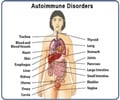

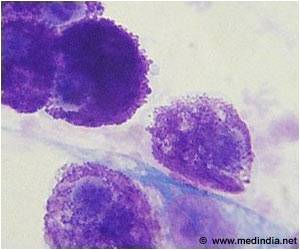

 Email
Email







